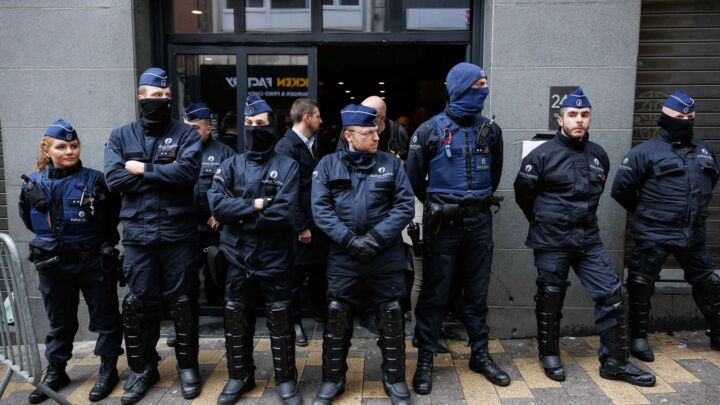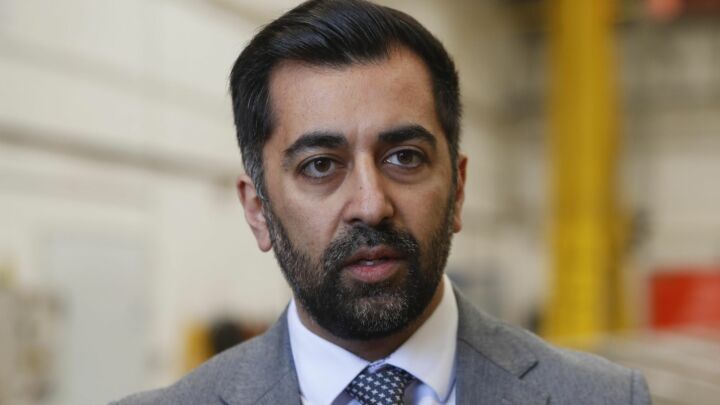Letters from a beaten figure
A collection of William Burroughs’s letters reveals the Beat writer’s thoughts on everything from Denmark and drugs to ringworm and movie stars.

Volume 1 of William Burroughs’s letters took readers from 1945 to 1959, following his frequent changes of location from New York to Texas, Mexico City, Tangiers and Paris, as he turned his hand to junk pushing, cannabis growing, pea farming, psychopharmacological investigation and – finally – writing. Burroughs skipped bail and left Mexico for good after accidentally shooting his wife dead, leaving their son Billy to be raised by his grandparents in Florida. During this early period, letters were a vital conduit for Burroughs’s political and intellectual ideas and for the continuation of friendships, principally with Allen Ginsberg.
In Volume 2 we pick up the story with Burroughs living in Paris, just having sent off the proofs of Naked Lunch to the printers. 1959 was a suitable cut-off point for the first volume as it marked a major change in Burroughs’s life. The publication of Naked Lunch led to Burroughs emerging as a major counter-culture figure and he became increasingly detached from his Beat friends, Allen Ginsberg, Jack Kerouac and Gregory Corso. A catalyst for this was his friendship with artist-writer Brion Gysin. While Gysin opened up Burroughs to the possibilities of visual and verbal collage, he also fuelled the American’s misanthropy with a toxic combination of misogyny, anti-Semitism and paranoia. Many of the letters in this volume are addressed to Gysin and are marred by virulent sexism and anti-Jewish comments, genuinely held but no doubt playing up to the recipient’s biases.
This year also saw a change in Burroughs’s writing. In 1959 Gysin and Burroughs experimented by collaging disparate texts (pulp sci-fi, erotic fiction and newspaper articles), producing disorientating and frequently funny juxtapositions. They called it the ‘cut-up’ method. Over the next few years, Burroughs produced novels based on his cut-ups. This was revolutionary and while some of the resultant conjunctions are memorable and beautiful in short passages, over long stretches the accidental poetry is submerged in a verbal coleslaw of jumbled phrases lasting many pages without paragraph breaks. Even diehard fans have difficulty reading The Soft Machine (1961), The Ticket That Exploded (1962) and Nova Express (1964). In the early Seventies, Burroughs returned to narrative and wrote a number of utopian fantasies about colonies of gunslingers, combining libertarian politics with gay erotica and boys’ adventure stories.
The evidence is that, for Burroughs, this period – which included the making of films and audio tapes – was rich in terms of achievement and exchange of ideas but personally unfulfilling. An emotional attachment to Mikey Portman, an unpredictable and feckless mooch, drove Burroughs to distraction. His intimate companionship with Ian Sommerville, a Cambridge engineering prodigy, provided more intellectual stimulation. When the passion cooled and Sommerville left, Burroughs had to make do with live-in lovers rather than creative soulmates.
A return to Tangiers proved disappointing. The open cosmopolitan nature of the International Zone of Tangiers in the 1950s (where most of Naked Lunch was written) had been swept away by Arab nationalism. Morphine, hashish and boys were not as readily available as they had been before. In order to alleviate his aging parents of the burden of raising his son, Burroughs agreed to look after the now troubled teenager who joined him in this louche milieu, replete with drugs and emotional and sexual tension. Predictably, the experience was not a happy one for either father or son. Burroughs’s letters to Billy when he returned to Florida are full of solicitous advice to the budding writer, the tenderness tinged with guilt.
Burroughs is often mischaracterised as an advocate of narcotics. Actually, he was ambivalent. Many of his visions and insights came during narcoleptic states but he was also acutely aware of the problems and discomfort that drugs brought. When he went to Harvard to visit Timothy Leary, the psychologist and writer known for his advocacy of psychedelic drugs, he was aghast at Leary’s recklessness. ‘The scene here is really frantic. Leary has gone berserk. He is giving mushrooms to hat-check girls, cab drivers, waiters, in fact anybody who will stand still for it.’ Appalled that he had been hoodwinked into joining a campaign to promote psychedelics rather than to conduct scientific research, Burroughs departed immediately. ‘I hope never to set eyes on that horse’s ass again. A real wrong number.’ However, he did later campaign against a 30-year sentence for Leary’s possession of cannabis.
Disillusioned and unattached, Burroughs drifted to London, where he was not especially content. His Duke Street flat was heavily carpeted, making the place a natural studio for his audio recordings. The isolation was more than aural; it was symbolic. By ensconcing himself in stuffy St James’s, Burroughs had unwittingly or otherwise chosen to isolate himself from the burgeoning avant-garde art and hippy scenes of swinging London. Elsewhere, he mordantly described the stultifying atmosphere of eating supper at the same sepulchral steakhouse every evening. Burroughs was productive in London, writing thousands of pages of novels, stories, articles and letters, perhaps to compensate for Gysin’s absence (in Paris and Tangiers), guilt over Billy’s wayward behaviour and concern about his mother’s encroaching dementia.
At this time Burroughs became enthusiastic about Scientology. Ever fascinated by control systems and conditioning, Burroughs initially viewed Scientological methods of psychic auditing as a possible way of liberating the individual from emotional trauma and blind societal conformity. Eventually, L Ron Hubbard’s shiftiness and the controlling nature of the church organisation left Burroughs critical and he turned his withering scorn on what he saw as a group using valid tools for psychological liberation in just another exploitative con.
The collection of Burroughs’s writing also contains letters detailing Burroughs’s travails in the film industry. His collaborative no-budget films got made; his ambitious projects, including a Naked Lunch adaptation, did not. Star actors proved temperamental and financiers flighty when faced with the writer’s scripts. ‘This film would take a hundred years to shoot and cost more than three world wars’, Burroughs concluded sadly.
High-profile recipients of Burroughs’s letters include Allen Ginsberg, Alexander Trocchi, Norman Mailer, Paul Bowles and others (though not Kerouac, from whom Burroughs seemed estranged), as well as the writer’s son and parents. Among others, subjects range from the beauty of Switzerland, the dullness of Denmark, apomorphine treatment of heroin addiction, cures for ringworm and the failings of Truman Capote. It should prove a diverting read for anyone acquainted with Naked Lunch and with many readers who aren’t.
Alexander Adams is an artist and critic based in Berlin. He regularly writes for Apollo, the Art Newspaper and the Jackdaw.
To enquire about republishing spiked’s content, a right to reply or to request a correction, please contact the managing editor, Viv Regan.








Comments
Want to join the conversation?
Only spiked supporters and patrons, who donate regularly to us, can comment on our articles.